Hagia Sophia and The Sultan Ahmed “Blue” Mosque
Hagia Sophia
Every art and architecture student has studied the beauty and wonder of Hagia Sophia. It is a premier example of Byzantine art and construction. This fortress-esque structure has stood as a testament to human ingenuity since 537 AD. That’s not a typo. This massive sprawling citadel to God is just under 1,500 years old and has played a pivotal roll in human architectural history. Some reports suggest that it also held the title of largest cathedral in the world for nearly 1,000 years. No small accomplishment.
Amazingly the entire structure was built in less than 10 years, reportedly by a work crew of some 10,000 people, by the decree of Justinian I of Constantinople. It was the third basilica to be built in the location and the largest of the three. Unfortunately, the structure was severely damaged less than 20 years after it was completed by a series of earthquakes which collapsed the main dome. Resiliently, the dome was re-built, re-structured and raised some 20+ feet. These enhancements were completed quickly and done by the year 562.
The church stood as a shining example of Christiandom until 1453 when the Ottoman empire conquered Constantinople. The church was immediately converted into a mosque, a process which resulted in the removal of most of the holy relics, altars, and bells. Interestingly, instead of removing the old Christian mosaics, the Ottomans decided to paint over them. The interior was re-decorated to serve as a mosque and the building’s four large minarets were added. The majority of the building’s interior (as seen today) dates back to this period, with the exception of several large christian mosaics which were recently uncovered.
The building served as one of the largest and most impressive mosques in the Muslim world for the next several hundred years. The mosque’s design and appearance was mirrored in other Ottoman mosques and served as inspiration for Istanbul’s numerous structures. It served as the key model for the Sultan Ahmed Mosque, which is now commonly known and recognized as Istanbul’s Blue Mosque. In an interesting turn of history, Hagia Sophia ceased to be a mosque in 1935 when the then newly elected President Ataturk decreed that it be converted into a museum.
The interior of the structure is truly fascinating. The sheer scale of the open space in the main area will leave you feeling tiny. The mosaics are beautiful and reflect the periods in history during which they were created. The mixture of cultures, religions and periods in history is evident in all aspects of the structure creating an eclectic mixture that while somewhat cold, still manages to be very rich and engaging. Stay tuned for video from inside Hagia Sophia in future posts. Beyond that, you’ll just have to visit yourself!
Sultan Ahmed “the Blue” Mosque
The Blue Mosque was completed in 1616 and sits immediately opposite Hagia Sophia. The mosque embodies the epitome of Byzantine-influenced Ottoman construction. It relies on heavy inspiration from Hagia Sophia, but the building’s lines and domes are enhanced while simultaneously integrating a series of six minarets into the original design.
From the start, the goal while creating the Sultan Ahmed Mosque, was to create one of the greatest mosques in the world. The structure was built on a massive scale and can accommodate 10,000 people during prayer. It was created to be a purely Muslim structure, in contrast with Hagia Sophia which had a mixed heritage. It was also fairly controversial initially due to its 6 minarets, which was a violation of accepted policy at that point in time-typically all mosques outside Masjid al-Haram in Mecca were limited to four minarets.
Unlike Hagia Sophia, the Blue Mosque is still in active use and faithful are welcomed to attend for daily prayer. However, don’t fret – the mosque remains open most of the day for tourists, who are welcome into the mosque and given free roam of just under half the ground floor. If, that is, you’re willing to leave your shoes at the door and have made sure to dress appropriately.
The mosque’s nickname comes from the beautiful blue tile work that decorates its interior. This is accentuated by more than 200 blue stained-glass windows. The tiles and beautifully painted calligraphy work has made the Blue Mosque one of Istanbul’s leading tourist attractions.
Every inch of the building’s interior is covered in rich, padded carpets, beautiful stained-glass windows, or intricately decorated Islamic decorations and calligraphic script. The amount of time and energy that went into these decorations is staggering and an amazing testament to the might, wealth, and glory of the Ottoman Empire at its peak.
For people familiar with calligraphy, many of the tiles depict beautiful flowing script, which are verses from the Qur’an and were created by Seyyid Kasim Gubari – one of the greatest calligraphers in his era.
The interior of the Blue Mosque is absolutely gorgeous. However, it is also slightly overwhelming making the structure feel somewhat smaller and significantly more cozy than Hagia Sophia. If planning a visit to Istanbul, I highly suggest visiting both structures and dedicating ample time to each. While it is easy to assume that the two will be very similar, the reality is that the experience varies significantly from one to the other. The Blue Mosque will awe you with its beauty, with its polished architecture and wonderful lighting. Hagia Sophia will captivate you with its size, scale, and odd mixture of religious and cultural history.
Other Mosques Abound
As a first-timer to Istanbul I expected that the Blue Mosque and Hagia Sophia would be the only two large religious structures in the city. Especially after seeing the incredible size and scale of the structures it made it hard to imagine that the city could have ever supported a third, fourth, or fifth building of similar scale and scope.
So, perhaps you can understand (and share) my surprise at discovering that Istanbul’s skyline is decorated by the impressive domes and needle-like forms of towering minarets from at least half a dozen large mosques.
Have you visited Hagia Sophia and the Blue Mosque? What were your favorite parts? What surprised you?
**Bonus – While visiting Hagia Sophia, there is a free (and separate) series of tombs which can be accessed from the external side of the building. These serve as the eternal resting place for a number of the region’s influential rulers and religious figures, in addition to boasting their own wealth of beautiful tile and mural work.
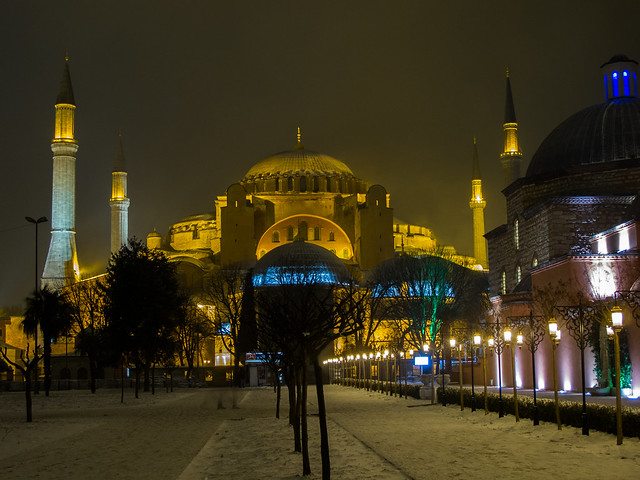
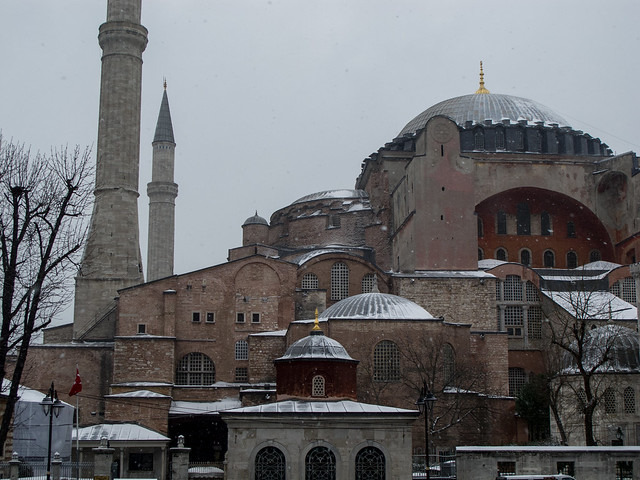


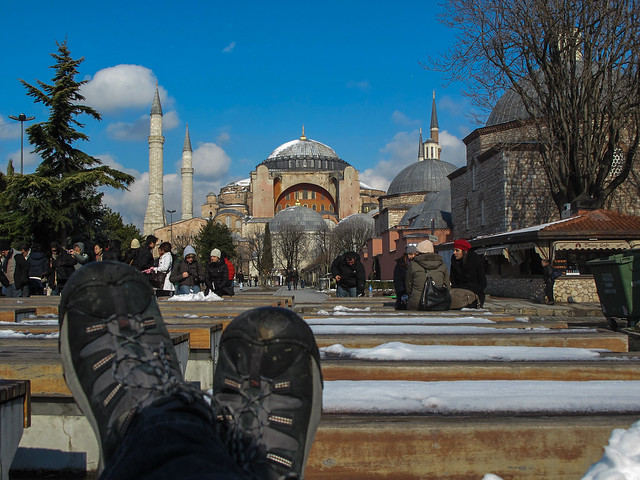

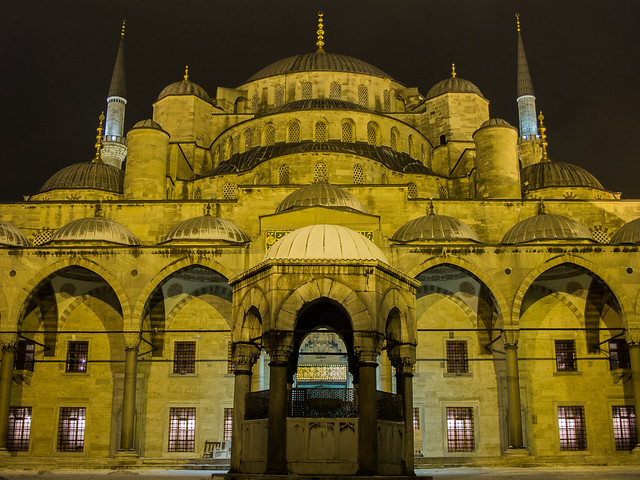

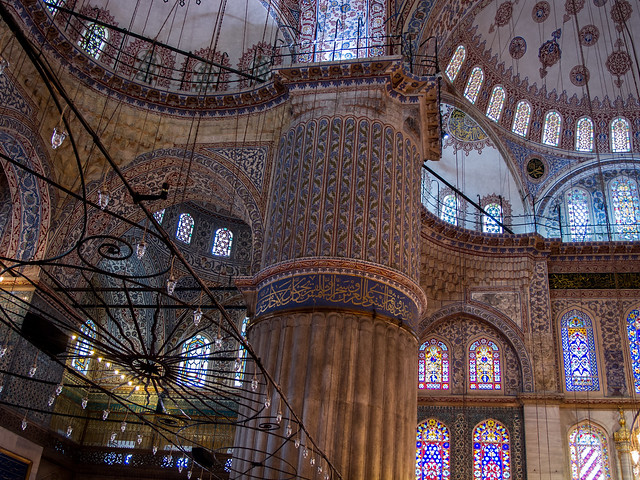
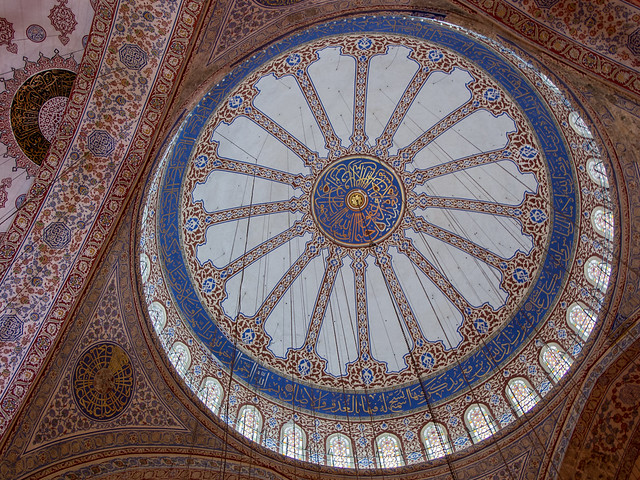



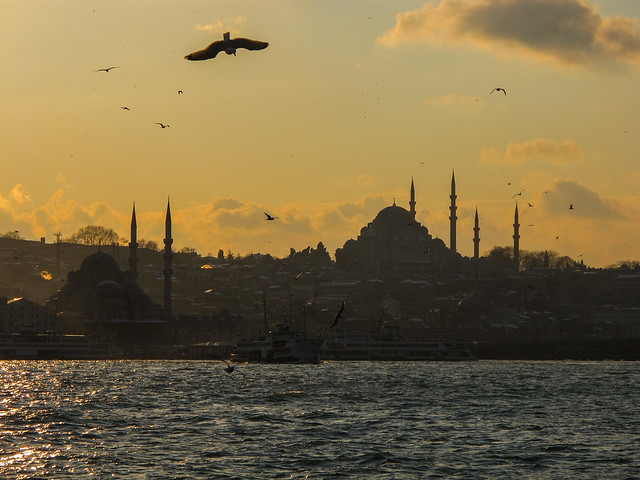
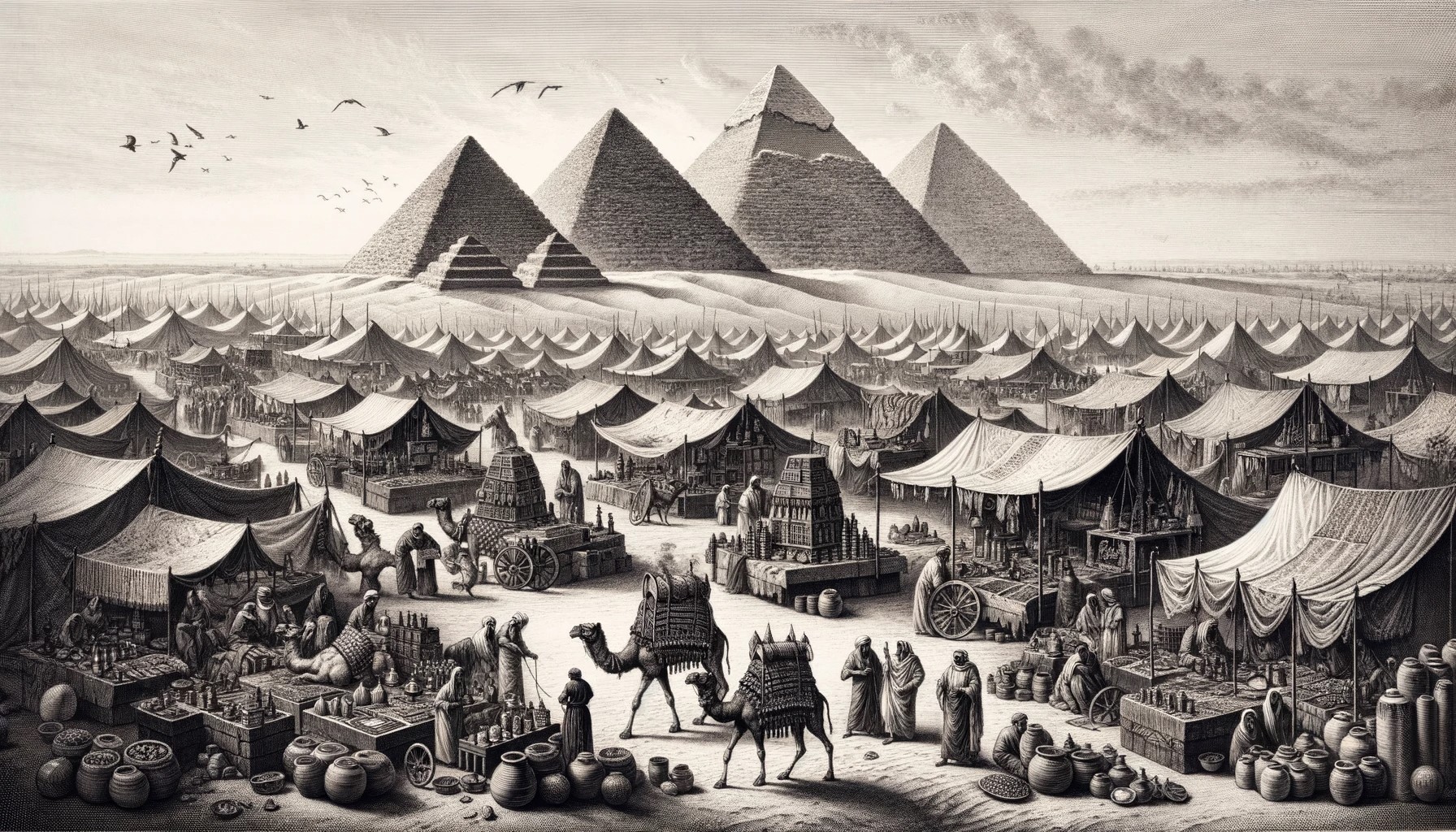
what incredible photos – and thank you for teaching me about these places!
Thanks! Amazing history that I really had no clue about until on the ground exploring and learning!
I was just in Istanbul a few months ago, and I too was fascinated how such structures could be built so long ago. I say in my post, I felt like the Hagia Sophia and Blue Mosque look more from planet Tatooine from Star Wars than Earth, (but maybe that’s where they got the inspiration!) Awesome photos by the way!
That’s a fantastic point! They really do, don’t they!
Gorgeous photos! I’ll be there in about two weeks, so this is getting me really excited about my trip. I’m glad it won’t be cold enough for snow while I’m there though!
I’m excited for you! It is an amazing city! Even thinking about the food makes my mouth water. Still a lot that I missed, so I can’t wait to get back and see more of the city soon! Any questions, don’t hesitate to shout =)
Love the photos Alex – I went twice to the blue mosque last time I was in Istanbul, but missed opening on both times due to prayer. I will make it next time!
Shucks! Just going to have to go back I suppose! =)
Amazing photos! I especially liked the ones of Aya Sophia, my favorite building in the world, in the snow. One of my favorite Istanbul memories was being allowed to attend the evening prayer service in the Blue Mosque. One of the ironic things was this day was Easter and my birthday. As a child I had always wanted Easter to fall on my birthday and the first time it happened, I was as an adult spending it in Turkey at the Blue Mosque.
Wow, sounds like a fascinating way to spend a birthday! It is always funny how things work out isn’t it? What a delightful memory!
Something magical about when the snow is on the ground here in Istanbul. Amazing photos Alex. Even though I see these beauties every day, your photos have given me a new way to look at them.
~Vago
Very kind words, thank you! It really was spectacular and “Magical” is the right word. Despite the cold, i’m really glad I was there when I was! Always fascinating how seeing our local sights through another’s eyes can give us a totally different insight into them!
Islamic architecture is always a great inspiration, seeing the mosque how it is designed and well-detailed structure. Thank you for sharing this one.
It most definitely is! So much history and influence on the rest of the world.